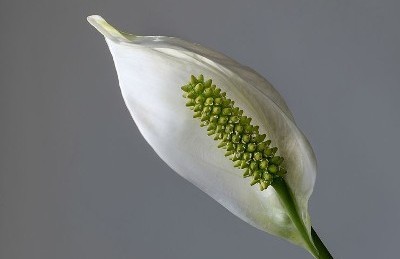Disclaimer: The information on curenaturally.org is intended to improve your knowledge about herbs and their benefits. Articles on this website are not intended to replace medical treatment from your doctor. Always consult your doctor before starting a new treatment regimen.
Published on March 02.2020
Updated 10.21.2018
Use of Herbs in Curbing & Preventing Infections

By Dr. Ashraf Girgis N.D.
No one can deny the importance of antibiotics. Post-WWI, Scottish biologist, botanist, and pharmacist Alexander Fleming (1881-1955) was looking to develop an agent that could combat infections, as many lives were lost during the war due to deep wounds unaffected by antiseptic agents. Fleming was already well-known among scientists of his time for his discovery of enzymes. On September 28, 1928, he came back from vacation and noticed that “one culture was contaminated with a fungus, and the colonies of staphylococci immediately surrounding the fungus had been destroyed, whereas other staphylococci colonies farther away were normal.” Famously, he remarked, “That’s funny.” This is how penicillin, a lifesaving antibiotic, was discovered.
Despite the many positive effects of antibiotics, there is no doubt that their overuse in feeding livestock since the 1970s has made people more resistant to them. Data from the United States found that from 2010 to 2011, there were 154 million prescriptions for antibiotics. New data published in the Journal of the American Medical Association (JAMA) in 2016 indicates that 30% of such antibiotic prescriptions are unnecessary. These prescriptions are written for common cold, ear infections, or viral infections, and many of these ailments do not respond to antibiotics, according to CDC data.
|
|
|
In 2015, the White House released a national plan of action to cut the at least half of inappropriate and overuse of antibiotics by the year 2020. This was called the National Action Plan for Combating Antibiotic-Resistant Bacteria (CARB).
Antibiotic resistance is a major threat in the United States. According to a report published in 2013, “Each year in the United States, at least 2 million people become infected with bacteria that are resistant to antibiotics and at least 23,000 people die each year as a direct result of these infections.
Many more people die from other conditions that were complicated by an antibiotic-resistant infection.” Therefore, it is imperative that we not only be careful with our antibiotic use, but also encourage our lawmakers to put a stop to antibiotic use in our food. The emphasis should instead be on prevention, prevention, and more prevention. If we keep our bodies strong, they can fight the infections and repair themselves.
One method of prevention is eating healthy, by adding FRUITS AND VEGETABLES and nuts. While Managing stress by adding laughter, meditation,parayers(form of meditation), mindfulness practice. In order to improves our immune system function. It is also helpful to add prebiotics and probiotics, so that we can maintain a healthy gut microbiome. This keeps our body in a good, healthy state.
|
 |
|
|
|
Here I would like to talk about few of these magical natural medicines. Many of the following herbs have been used for centuries or sometimes for thousands of years .
Garlic
Garlic is one of my favorite herbs. I use it for viral and bacterial infections, since it is effective in treating a wide range of bacteria. Garlic has so many properties that a whole book could be written about it. Garlic has a very special place in Persian culture. In fact, it is so significant that it is included in the Sofre-Haft-seen, an important Persian New Year table-setting tradition for at least 3000 years if not more, garlic is native to Iran. But spread all over the world.Garlic in this Persian New Years setting symbolizes medicine and the containment of illnesses caused by evil.
Once it is chewed, chopped, or sliced, the phytochemical allicin in garlic is converted to the active ingredient allicin. Many of garlic’s health benefits are attributed to this conversion. Garlic contains Vitamin C, selenium, manganese, potassium, iron, copper, and calcium. Garlic is also an excellent source of Vitamin B6. Nutritionally, it contains proteins, complex carbohydrates, and fiber. Its therapeutic effects are attributed to its volatile sulfur-containing ingredients, such as allicin, diallyl, disulfide, and trisulfide, among others.
 |
 |
Garlic has also been shown to be anti-bacterial and anti-fungal; it has been referred to as the “Russian Penicillin” due to its many antibacterial effects. It strengthens, stimulates, and modulates the immune system's response to disease. Therefore, it helps to prevent malignant cells and tumors from developing and spreading. Plus, garlic’s sulfur compounds have a powerful effect on the liver’s detoxification enzymes; it is these enzymes which the liver uses to break down and eliminate toxins. Garlic thus helps the liver to remove toxic substances and harmful chemicals from the body; this action can actually keep cells from becoming cancerous.
The many benefits of garlic can be summarized as follows: it fights infections, cardiovascular disease (due to antiplatelet aggregation), arterial occlusive diseases, and cancer. Garlic is probably the most important herb that can be safely used against cancer, in conjunction with a healthy diet with many fruits and vegetables.
Garlic is also an excellent prebiotic. Prebiotics are like fertilizer for your guts; they aid in the growth of good bacteria. Make sure to cut the clove of garlic to release its medicinal properties.
|
|
|
|
Echinacea (Purpurea, angustifolia, Pallida)
Not long ago, new research came out about the herb echinacea. It garnered a lot of attention because it found that echinacea was not effective in treating infection. However, one has to realize that when using herbs, the correct constituents must be included in the proper amounts. The most important constituents responsible for echinacea’s anti-inflammatory effects are polysaccharides, caffeic acid derivatives, essential oils, and alkylamides. Research shows that all three types of Echinacea (E.Purpurea, E.angustifolia, E.Pallida) have strong anti-inflammatory effects (Raso et al 2002, Zhai et al 2008).
Archeologists discovered that Native Americans have been using Echinacea for the past 400 years in wound healing and infection treatment. In the 20th century, the Germans conducted a large amount of research on Echinacea. It has both antibacterial and antiviral properties. Its antiviral activities have been shown to work against herpes simplex (HSV); evidence suggests that polyphenolic and cichoric acid compounds may be responsible for this (Birt et al 2008). Echinacea has also been found to be very effective against the flu, common cold, fever, and the overall strengthening of the immune system. In fact, it is a great idea to make Echinacea tea at the first sign of sickness. Echinacea has many other benefits as well, including antifungal (Binns et al 2000) and antioxidant activity which comes from its vitamin C, beta-carotene, flavonoid, selenium, and zinc constituents.
Echinacea is more of an immune system modulator than a stimulator. Although all of its constituents are significant in this immunomodulation role, the most important are likely its polysaccharides, alkamides, glycoprotein and flavonoids (Ernst et al 2002).
Echinacea has been used in urinary tract infections, vaginal yeast (candida) infections, hay fever (allergic rhinitis), ear infections (otitis media), sinusitis, athlete's foot, and slow-healing wounds. In Germany, all parts of the plant which are above ground are used to treat these diseases.
Echinacea can interfere with some medications (for example, immune-suppressing drugs in transplant patients). Echinacea also prolongs the breakdown of caffeine in the body. Use caution if you are using anti-cancer drugs or anti-viral drugs, as Echinacea can interact with these (Meijerman et al 2006). As always, check with your health practitioner before using any herbs.
|

|
|
|
|
|

|
Marigold (Calendula officinalis)
Calendula officinalis belongs to the asteraceae family. The flowers are the part of the plant primarily used in medicine, but the entire herb is edible. Its younger leaves, seeds, and roots can all be used for medicinal purposes. Marigolds are typically used as a topical medicine or cream.
Calendula has been used for its medicinal effects in Iran since the 12th century, according to ancient medical textbooks. Calendula officinalis is native to Iran and the Mediterranean region. Its constituents include oleanolic acids and flavones, among others. Its anti-bacterial, anti-viral, anti-fungal, and anti-inflammatory effects come primarily from its terpenoid, faradiol, and amidiol constituents (Neukirch et al 2005). The flower extracts show high resistance to all fungi (Kasiram et al 2000). A 70% hydro-alcoholic extract has shown anti-viral activities against the influenza virus (Bogdanova et al 1970).
In vitro, Calendula has demonstrated anti-HIV activities (Ukiya et al 2006). It has been used as a skin ointment for the regeneration of skin in wounds, burns, bruises, and minor skin infections. In British pharmacopoeia, Calendula is recommended for gastric and duodenal ulcers, as well as for amenorrhea (absence of menstruation) and dysmenorrhea (irregular menstruation). In Europe, it has also been used on cracked nipples during lactation/pregnancy and for the treatment of acne and sunburn. Additionally, it has been used for tonsillitis and pharyngitis (Issac 1992, Evans 2002).
As mentioned, Calendula is rarely taken by mouth. It is used in extremely small doses in homeopathic medicine and usually applied topically. Calendula has a low toxicity and can be used long-term, according to animal studies (Elias et al 1990). Irritation dermatitis has been noticed as a side effect on rare occasions (Reider et al 2001). Currently, no studies are available on calendula’s interactions with other medications. People who have allergies in the asteraceae family need to use caution when using this herb. Always consult with your practitioner before using any herbs.
|
|
|
|
|
Goldenseal (Hydrastis canadensis)
Goldenseal belongs to Ranunculaceae family. It is indigenous to North America and has traditionally been used by Native Americans for many illnesses, including diarrhea, gastric diseases, menstrual abnormality, and inflammation in the mouth. Goldenseal is also called eye root, jaundice root, and yellow root.
Its chemical compounds are berberine and alkaloids including hydrastine, canadaline, hydrastidine, and corypalmine.
Goldenseal has well-known antimicrobial effects as a result of its berberine and other alkaloids. In a study of goldenseal, two of its flavonoids showed anti-bacterial activity against the oral pathogen streptococcus mutants and against the fusobacterium nucleatum (Hwang et al 2003).
Berberine alone, or in combination with ampicillin and oxacillin, has shown great antibacterial power against all strains of methicillin resistant staphylococcus aureus (MARSA). Berberine also possesses anti-fungal and anti-viral activities and has been shown to be an effective inhibitor of ganciclovir.
Goldenseal is contraindicated in kidney failure (Blumenthal 2003). The berberine in goldenseal can also effect bilirubin. It can cause acute hemolysis and jaundice in babies with a glucose 6 phosphate deficiency (Ho 1996). Hydrastine, a chemical component in goldenseal, has also been reported to cause hypertension. Therefore, goldenseal is not recommended for patients with hypertension. Goldenseal is also not recommended in lactating mothers or during pregnancy.
Grapefruit Seed, Olive leaf extract, Oregano oil extract from wild oregano, Pau d’Arco Among non herbal there is Colloidal Silver, Honey.
Enjoy your healthy garden and stay away from chemicals such as Roundup.
Thanks for visiting www.curenaturally.com
|

|
|
|
|
Additional Articles

Let Us Keep The Air Clean Inside Our Home And Offices
Read More |

Chamomile (Chamomilla recutita )
Read More
|

5 Herbs for Better Brain Health
Read More |
|
|
|
|